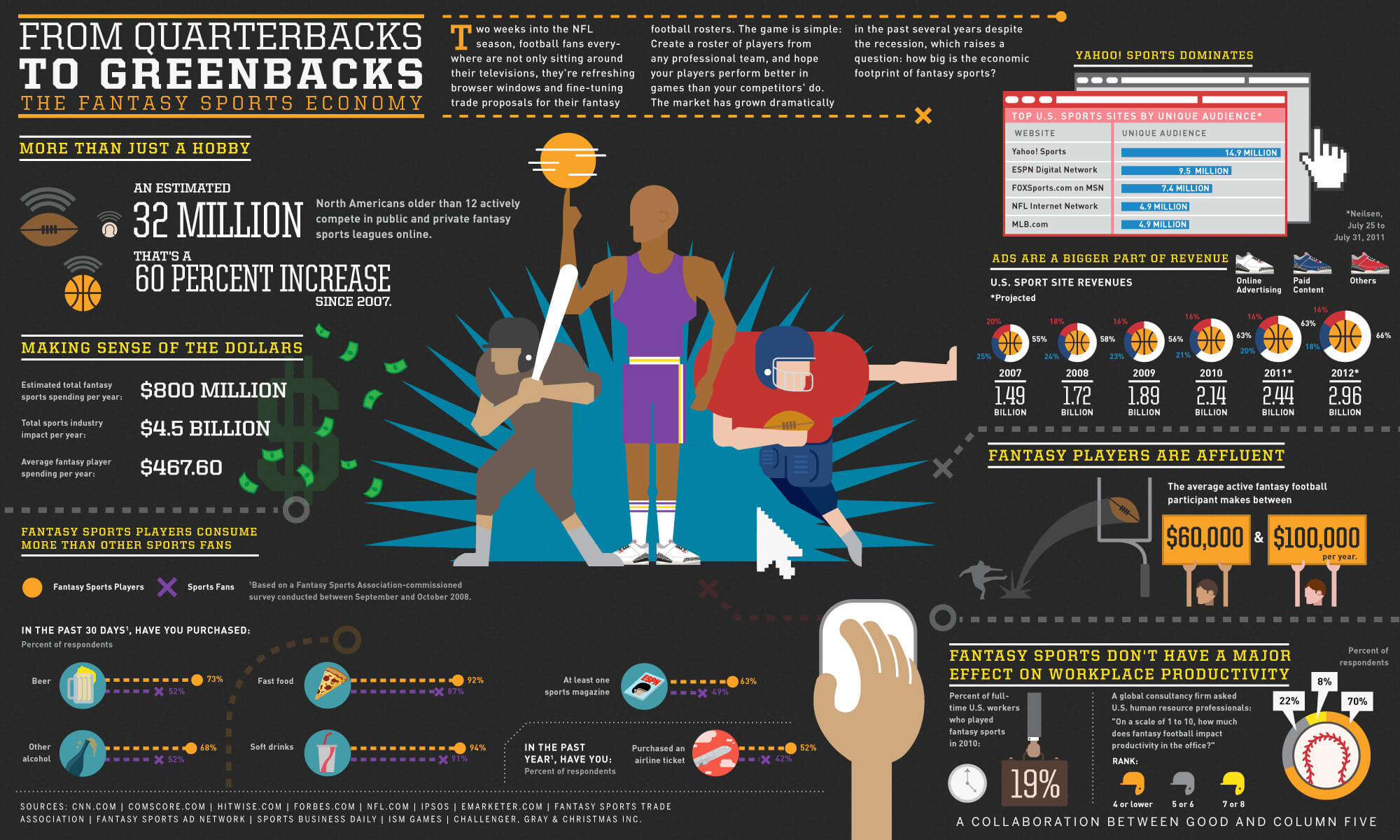The fallacy of the broken window.
This economic concept was explained fully and in exquisite detail in the book Economics in One Lesson by Henry Hazlitt. In brief, it says that if you spend $50 in one place then that means that you have $50 less to spend elsewhere. As an example, if you have $50 and want to purchase a jacket but your window becomes broken, then that $50 will have to the fixing of the window (because of its urgency). The $50 will go to the repair of the window (and leading it to further circulation) but you will be out $50 and will not have the jacket.
We thought about this while seeing “The Fantasy Sports Economy” infographic. People apparently are spending $4.5 billion globally in this field. This equates to almost $500 spent by each participant each year. This amount is undoubtedly larger now in 2015. The graphic indicates that revenue went up more than 55% in the three years from 2009 to 2012. If it has gone up another 55% since 2012 (the most recent year for the graphic) then that means a global revenue of more than $7 billion now.
Should all this money go toward this economy? Perhaps it should since this is apparently a free market; no one is pointing guns at people’s heads, telling them to participate. However, we are uncertain of its utility. Of course, everybody dreams of get-rich-quick schemes, and some people undoubtedly to win more than $500 per year (or more money than they spend). However, much more people lose more than they win. After all, the bookies have to take their cut of the revenue pie.
Likes: It provides a good argument against the supposedly deleterious effects of workplace productivity.
Dislikes: The font is far too small.
By every metric imaginable, fantasy sports are growing fast. Take a look at how your 20-buck-a-head league fits in to a $4.5 billion worldwide economy. (Source)

